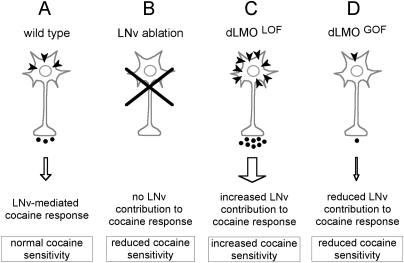Figure 9. A Model for LNv and LMO Regulation of Cocaine Sensitivity.
(A) In wild type, LNvs modulate locomotor responses via electrical activity and synaptic transmission. We propose a model in which cocaine acts to directly increase LNv activity. Upon cocaine administration, synaptic DA concentrations are increased (via cocaine's inhibition of the plasma membrane DA transporter). Activation of presumed DA receptors on the LNv (dark arrowheads) stimulates electrical activity and subsequent synaptic output. This activity contributes to the behavioral response of the fly to cocaine.
(B) LNv ablations eliminate LNv contribution to the cocaine response, reducing cocaine sensitivity.
(C) In our model, Lmo loss-of-function mutants (LmoLOF), which have increased cocaine sensitivity, have increased activity/output during the cocaine response. This increased activity may be mediated by increases in receptor content on the LNv or by recruitment of other LNvs that normally do not participate in the cocaine response.
(D) Lmo gain-of-function mutants (LmoGOF) mutants have reduced LNv output and reduced cocaine sensitivity. This could also result from a reduction in receptor density.

